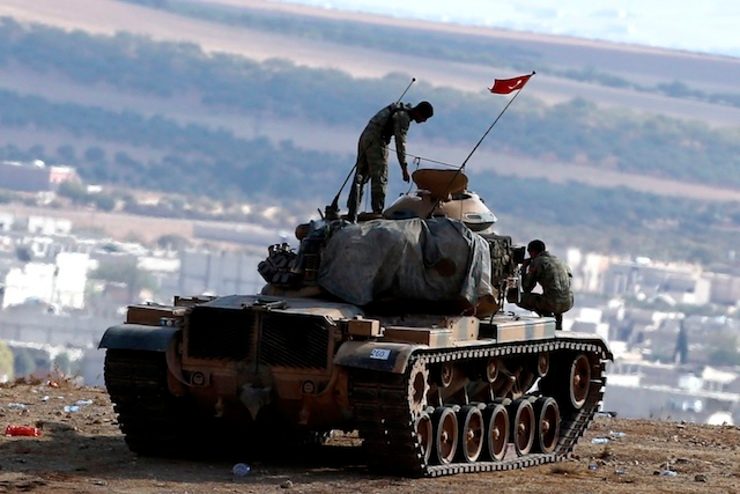SUMMARY
This is AI generated summarization, which may have errors. For context, always refer to the full article.

PARIS, France – Turkey has long sought a safe haven along its border with Syria, an idea which gained traction Wednesday, October 8, as Islamic State jihadists battled for control of a town on the Syrian side.
Paris openly supported the idea and London said it was worth examining.
However in a potential sign of US reticence over such an operation, contradictions emerged from Washington.
US Secretary of State John Kerry said it was “worth looking at very, very closely,” but the White House quickly said the idea was in fact not under consideration.
Either way, experts say there are many steps to take before such a zone can be put in place.
WHAT IS A BUFFER ZONE?
A buffer zone is an area which “separates two warring parties and creates a space where arms are forbidden,” said former general Dominique Trinquand, an expert on United Nations and peacekeeping operations.
Turkey wants to protect its border but also provide some security for Syrian Kurds fleeing the onslaught by Islamic State militants.
More than one million Syrians have sought refuge in Turkey since the Syrian war began in 2011, according to the UN refugee agency.
Trinquand said that such a buffer zone should stretch some 40 kilometers (25 miles) across the border.
It would incorporate the tomb of Suleyman Sha – grandfather of the founder of the Ottoman Empire – which is situated in a sovereign exclave of Turkey in Syria and is very important to Ankara.
PREVIOUS EXAMPLES
THE TWO KOREAS: North and South Korea have been separated by the Korean Demilitarized Zone (DMZ) since the end of the Korean war in 1953. It is four kilometers wide, 241km long and, with combat-ready soldiers patrolling on both sides, is the most heavily militarized border in the world.
CYPRUS: A United Nations buffer zone called the Green Line has separated the Greek-controlled south and Turkish-controlled north of the island since 1974.
GOLAN HEIGHTS: A 70km long buffer zone has separated the Israeli-occupied part of the Golan Heights and the rest of Syria since 1974.
ERITREA/ETHIOPIA: A buffer zone 25km wide and about 1,000km long separates the two countries. It was put in place by a peace deal signed in 2000 after a border war.
PRACTICAL IMPLICATIONS
Experts say it is vital that a UN resolution be taken under Chapter 7, which allows for the use of force, before any such buffer zone be implemented.
Would Moscow be amenable to the idea? In 2011, when Turkey first suggested the safe haven, it was supported by France and the US who did not take the matter further as it was thought Russia would veto the idea.
Putting in place a buffer zone would mean preventing overflights as well as ground penetration.
A no-fly zone requires patrols by fighter jets. This would require agreement from Syria – and neither Washington nor Paris have relations with Bashar al-Assad’s regime.
Then there is the question of how to prevent access to the zone without deploying ground troops, which all countries in the US-led coalition fighting IS have refused.
That would leave the job up to Turkey or UN peacekeepers.
Didier Billion, an expert with the French Institute for International and Strategic Relations, said Turkey – which already has tanks deployed at the border – could contribute, but this would not be sufficient for it to function properly. – Rappler.com
Add a comment
How does this make you feel?
There are no comments yet. Add your comment to start the conversation.